Last updated on March 25th, 2023
The American bald eagle is a well-known symbol of the United States. It appears on the official seal and presidential flag. It is on US coins and postage stamps. The image is inescapable. Its striking appearance never fails to make a strong impression, but few know the national bird beyond the symbolism. Peek into its life in the wild and see how it adapted across the years. Learn about its outstanding traits and fascinating quirks. Here are 50 facts about American bald eagles:
Physical Characteristics of Bald eagles
1. A Source of Confusion
No, they are not hairless. Bald eagles take their name from the old definition of the word, which is white-headed. White feathers appear at ages 4 to 5. Brown feathers cover the rest of their body.
2. Reverse Sexual Dimorphism
Adults are roughly 90cm tall and 200cm wide with open wings. Bald eagles exhibit reverse sexual dimorphism, which means the females are larger than the males. The gap is around 25%.
3. Variations in Location
They follow Bergmann’s Rule: species get smaller closer to the equator. The largest are in Alaska, with weights exceeding 7kg and wingspans surpassing 2.4m. Those in Florida tend to be much smaller.
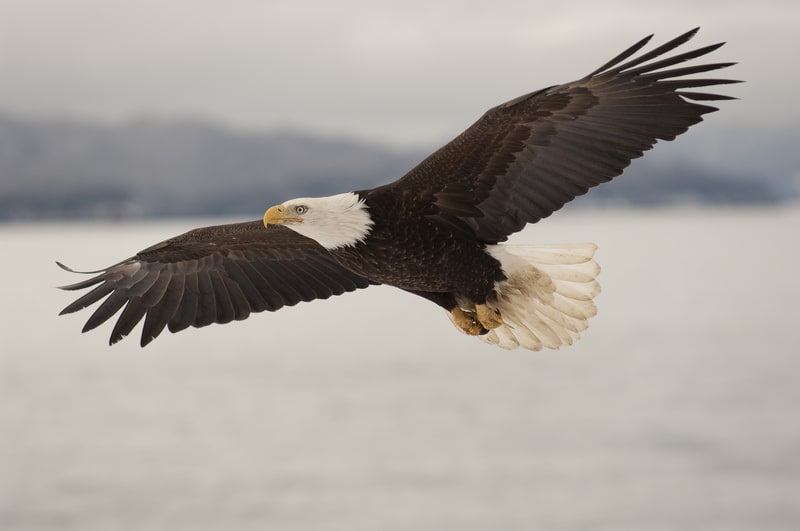
4. Eye of the Eagle
Their eyes have a piercing bright yellow hue. They can see 4 to 5x better than humans thanks to sharper focus and a wider field of view. They can even see ultraviolet light.
5. An Underwhelming Scream
Bald eagles communicate through a high-pitched yet weak scream. It is not as intimidating as their appearance might suggest. Filmmakers often use the powerful call of the red-tailed hawk when depicting bald eagles on TV.
6. Talons
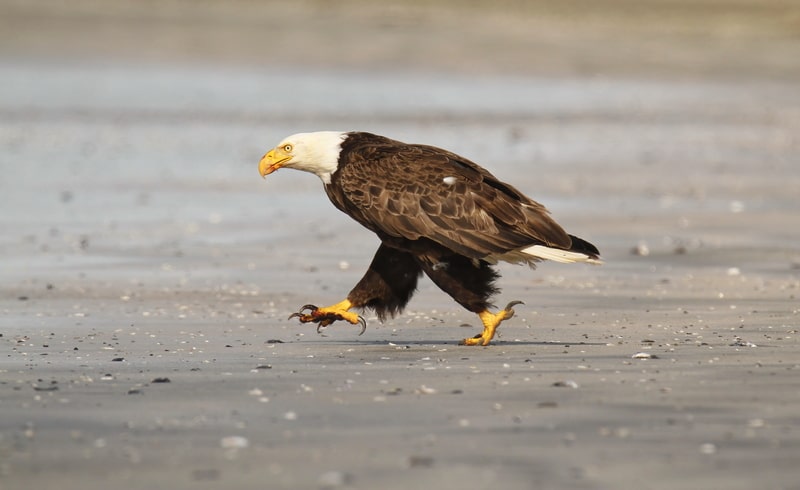
The legs of these eagles do not have feathers. They have short toes that grip prey and large talon that can pierce vital areas.
7. Fast Flights and Daring Dives
These majestic birds can fly at speeds of 70 kph and cover great distances. However, their most impressive aerial trick is diving at an incredible rate of 160 kph to catch fish out of water.
8. Water Protection
Hunting around waters makes them vulnerable to splashes. Fortunately, they have a transparent eyelid called a nictating membrane. It can shield their eyes from the salty water while allowing them to see their prey.
9. Two Subspecies
The scientific name is Haliaeetus leucocephalus, Latin for white-headed sea eagle. It has two subspecies: the southern bald eagle and the northern bald eagle.
10. Beaks
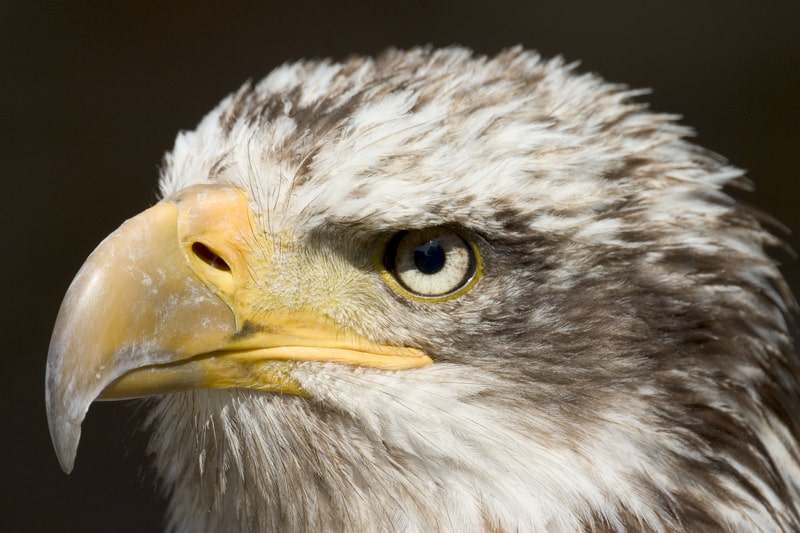
These eagles have large yellow beaks that curve downward like a hook. In Alaska, these have an average measurement of 6.83 cm. In the southern states, the smaller eagles can only reach 4.12 cm.
Food and Habitat
11. Separate Siblings
Bald eagles and white-tailed eagles are remarkably similar but inhabit different regions. The former flies around North America from Canada to Mexico, while the latter lives in Europe and Asia.
12. Food Preferences
Since these are sea eagles, they love hunting around waters for fish. They can also settle for turtles, rabbits, snakes, and waterbirds. They are not above feeding on dead fish and other animals.
13. A Buffet of Prey
One of the secrets to their survival is food adaptation. Bald eagles are not picky eaters. They feed on more than 400 species of prey, which makes them second to the red-tailed hawk in terms of variety among North American accipitrids.
14. Proximity to Water
You are not alone. Even eagles hate long commutes. Whenever possible, they will set up their nest within 200 meters of a body of water for ease of hunting fish.

15. Picking a Home
These eagles are picky when it comes to their living quarters. They like tall trees that grow over 20 meters and offer good visibility of their surroundings. They must be thick and sturdy, with a diameter of at least 82 centimeters to hold the weight of the nest.
16. Exceptions to the Rule
Giant trees are not always available, especially with deforestation. Bald eagles settle for shorter options rising to 6 meters if these are near bodies of water, such as mangroves. A few will shelter in cliffs or other elevated landscapes.
17. Nest Mansions
Large birds need large nests. At 2.5 meters in diameter, bald eagles can take a while to complete the building process using hundreds of twigs and small branches. Is it worth it? Yes! After all, they stay for many years.
18. Largest Known Nest
In 1963, biologists discovered a gigantic nest in St. Petersburg, Florida. It was 2.9 meters wide and 6 meters deep. Perhaps the most impressive thing is its weight of over 2,000 kilograms.
19. Tree Selection
Bald eagles choose different trees depending on the location. In Alaska, they nest on hemlocks and Sitka spruce, while in Wyoming, they prefer cottonwoods and ponderosa pines. Down in Florida, they live atop long-leaf pines and cypress trees.
20. Avoiding Humans
They instinctively avoid human habitations, and who can blame them? Bald eagles prefer to stay away from disturbance. Specifically, they live at least 1.2 kilometers from sparsely populated areas and 1.8 kilometers from cities. A few adapted to the noise in busy places like Harlem.
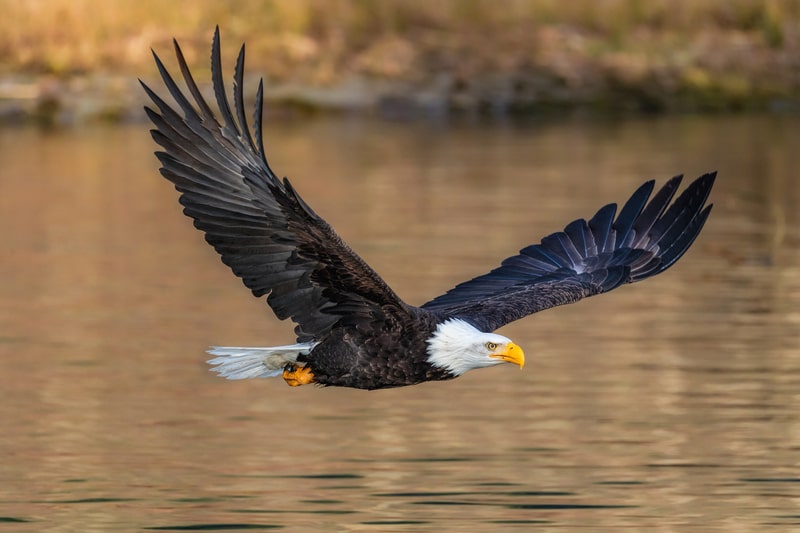
Breeding
21. Mate for Life
Loyalty never goes out of style for bald eagles. They look for a mate and stick together for life. These monogamous couples form a team that shares the load of nest-building and parenting.
22. Aerial Courtship
Males put their best foot forward to attract the opposite sex. They make sophisticated calls and exhibit aerial acrobatics. Interested females can join them in flight, lock talons, and perform cartwheels in midair — a test of their teamwork and compatibility.
23. Early Breeders
Bald eagles start their breeding activities early. They often lay eggs by late February and incubate these for a few months. The eggs typically hatch by mid-April. Meanwhile, other raptors are just beginning to nest around this time.
24. Protecting the Vulnerable
Females lay one to three eggs each breeding season. While a parent looks for food, the other must guard the nest against thieves. Raccoons and other birds are notorious for preying on eagle eggs and chicks.
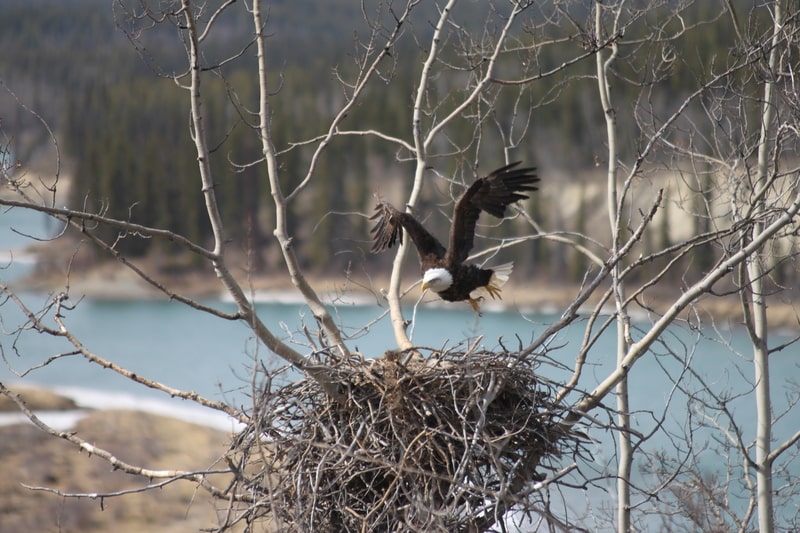
25. The Nest is a Playground
Every kid wants to play. Even young eagles tinker with toys: the twigs and sticks within their nests. If they have a sibling, they are likely to play tug-of-war. These are healthy activities that spur muscle development.
26. First Mover Advantage
Not all chicks survive. The oldest chick is generally larger and louder than the rest, helping it draw attention during feeding time. It may also attack and kill its younger siblings, but most nests produce two fledglings.
27. The Kids Grow Up
The eaglets have the fastest growth rate among North American birds. They gain as much as 170 grams per day with enough food. Eight weeks in, they can flap their wings and rise off the ground. They will need a few more weeks to leave the nest and go on solo adventures.
28. Flying Nomads
Juvenile bald eagles enjoy their freedom. They explore various regions to learn about different habitats and hone their hunting skills. Their nomadic lifestyle will continue for about four years, after which they settle down with a mate.
29. Adoption
It does not happen often, but bald eagles may adopt other raptor fledglings. Biologists observed a pair carrying a young red-tailed hawk to their nest. They took care of little Spunky until it was ready to fly.
30. Longevity
Bald eagles enjoy long lives. In the wild, they tend to reach 20 years of age. In captivity, this can extend longer than 30 years. The oldest recorded was 38 from the New York restoration program.
Unique Behaviors
31. Playful Birds

They may grow older, but they are still kids at heart. Bald eagles can turn plastic bottles and other objects into instant toys for their entertainment. Groups may play games, such as passing sticks in midair.
32. Cooperating Hunting
Although they prefer hunting alone, they may work with others when dealing with herons, jackrabbits, and other large animals. For example, one may chase as a distraction while another waits to spring an ambush.
33. Efficient Fliers
Bald eagles can cover hundreds of miles per day. How do they avoid fatigue? By soaring in the air instead of flying, taking advantage of thermal columns and updrafts along migration routes to conserve energy.
34. Perfect Timing

These birds are keen observers. They know when it is time for salmon and other fish to spawn. Over a thousand may descend on the traditional spawning sites to feed simultaneously. Beware the feeding frenzy!
35. Brute Force
Bald eagles use their size to overwhelm other predators. Behaving like thugs, they follow smaller birds and harass them until they drop their fish. Some steal the prey outright. The Osprey is one of their frequent victims.
36. From Air to Water
If the fish is too heavy, the eagles may struggle to fly away with it. Some swim with their wings and drag their prey to the shore. The movement is comparable to a butterfly stroke.
37. Built-in Storage Container
A bag? No need! When there is excess food, bald eagles store it in a pouch in their throat. This handy container can take as much as a kilogram of mass — good enough for several days of feeding.
38. Eagles as Scavengers
Are you eating outdoors? Watch out! Eagles steal food from picnic grounds and campsites. Some discover fish-processing plants and make them targets. In Alaska, bald eagles habitually raid garbage dumps.
39. Unconventional Nesting Sites
When they cannot find trees, they often settle on artificial structures like pylons and electric towers. Nothing but flat ground? That is fine, too. Bald eagles can still make a nest if there are no predators around.
40. Hunting Birds
Bald eagles do not just steal from birds. Sometimes they hunt fellow fliers as prey, such as the Canada geese. They engage in a dramatic aerial chase, swoop under the bird, and turn over to thrust their sharp talon into the chest.
. . . continue reading on the next page
